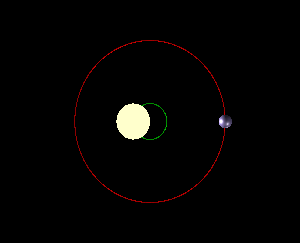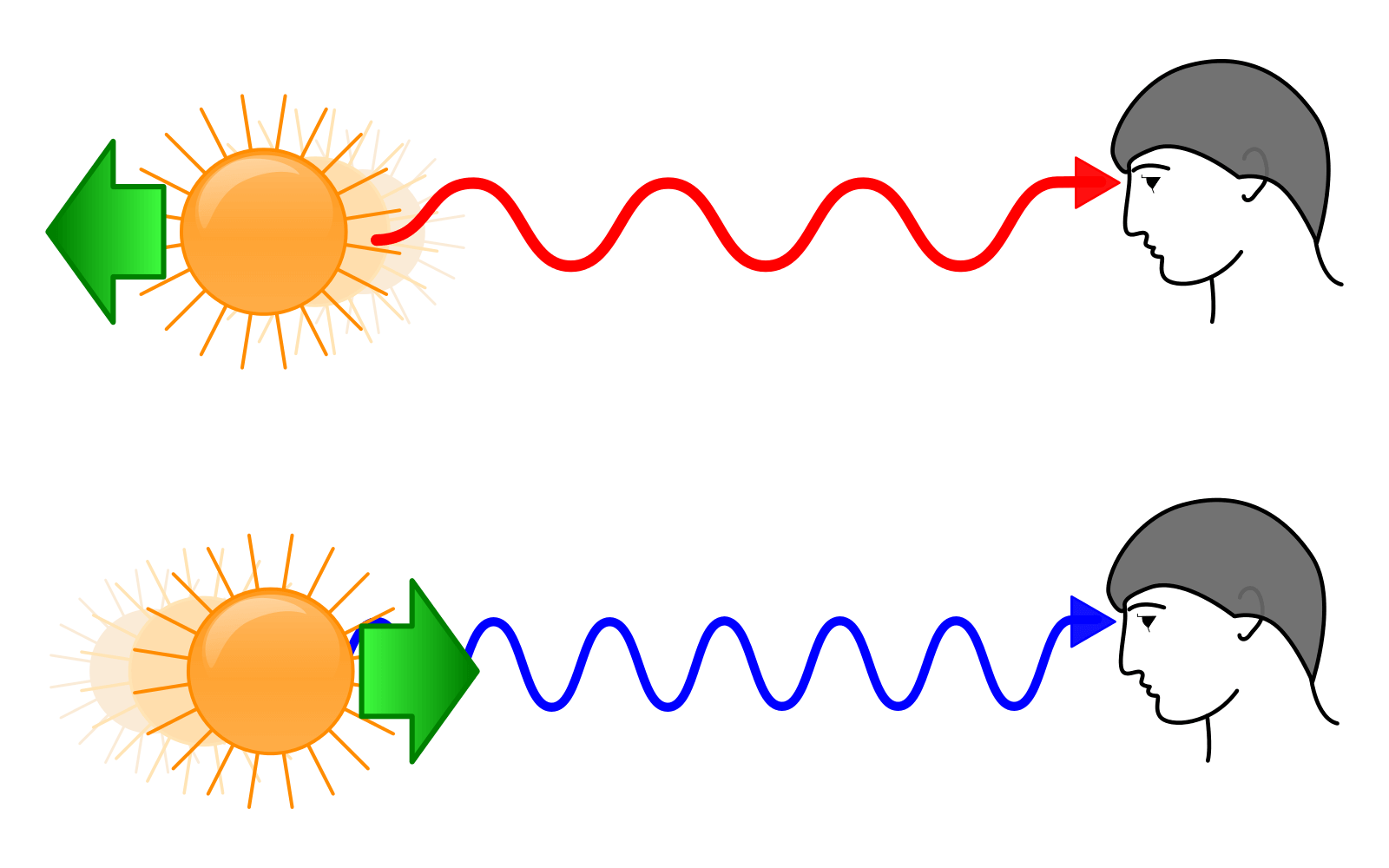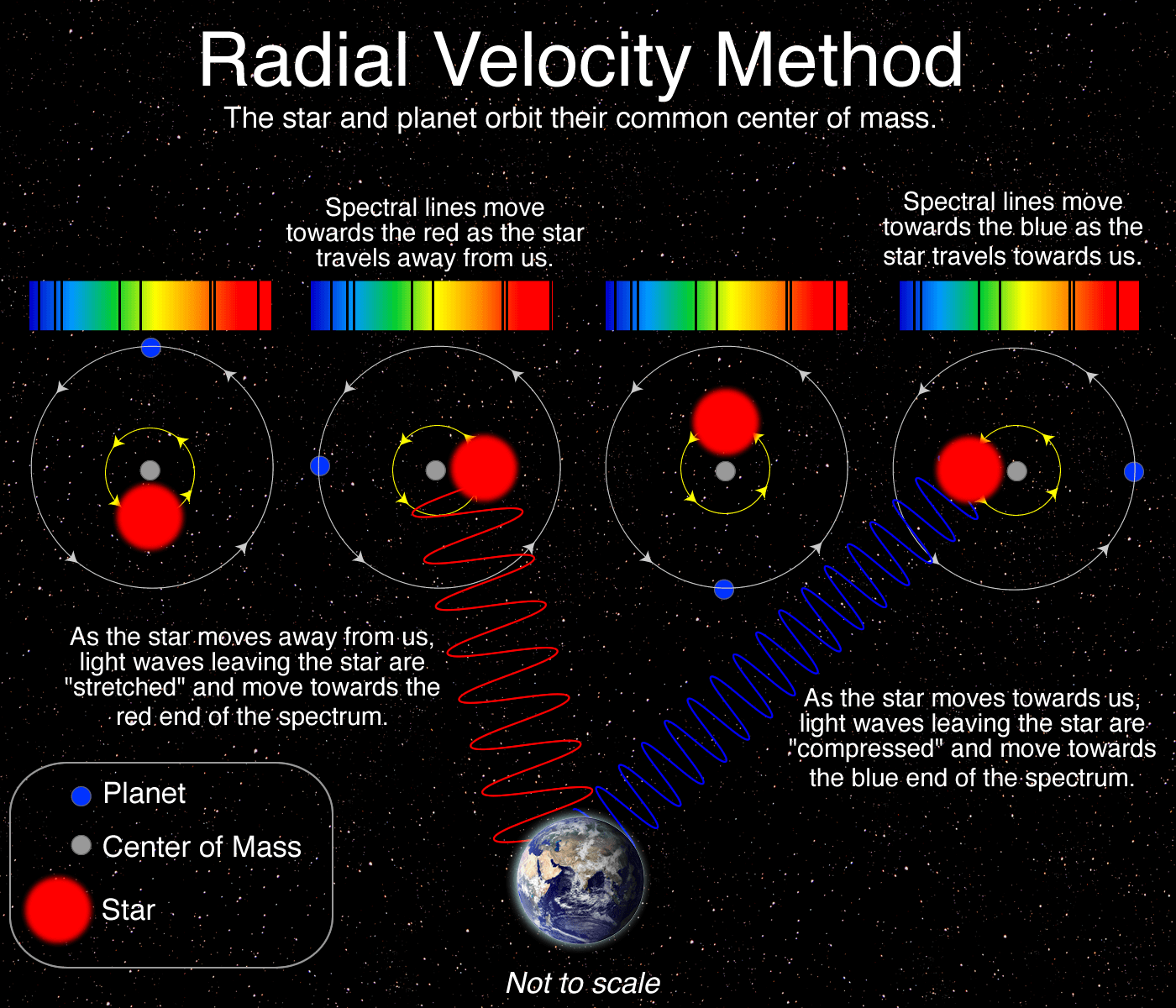Radial Velocity Method or Doppler Spectroscopy for Finding the Exoplanets

Left: The artistic illustration of the most massive confirmed exoplanet (by radial velocity method) 'Iota Draconis b' of masses 9.40 Jupiter's mass. Right: Comparison of several possible sizes for the exoplanet Gliese 581 e with the Solar System planet Earth. Gliese 581 e has the mass of 0.007906 mass of Jupiter and is the smallest exoplanet known by using the radial velocity method.
Finding exoplanets, though an important task, is tough. Space research agencies like NASA, European Space Agency (ESA), European Southern Observatory (ESO), using their specially designed hunting telescopes, are in uninterrupted hunting of the exoplanets in the extensive universe.
There are many different methods for the detection of the exoplanets and the detection methods vary depending on the nature and place of the exoplanets to be detected.
One well-known method for detecting the presence of exoplanets is the radial velocity method.
On this (radial velocity) method astronomers basically measure the variations in the radial velocity (rate of change of the distance between the object/source and a given point) of the star with respect to Earth. Mostly, a planet is engaged in its certain orbit by the gravitational field of more massive mass/object/star. You may know that due to the gravitational field of the massive object, the smaller massive object will revolve around the more massive object. This phenomenon is similar to the Moon revolving around the Earth, Earth itself, and the other eight planets of our solar system around our only star- the sun.
But you may have not noticed that the less massive object also interferes with the orbit of the more massive object but they do in practice.
This means in a star with a planet system, the star will move in its own small orbit in response to the planet's gravity. This effect is much smaller but is easily detectable for astronomers by using advanced spectrometer equipment like the High Accuracy Radial Velocity Planet Searcher (HARPS) spectrometer at the ESO and the HIRES spectrometer at the Keck telescopes.

Under this method, astronomers use a method called Doppler shift to detect the presence of planet around the star. Doppler shift arises by the change in the frequency of a wave in relation to an observer who is moving relative to the wave source. To realize the Doppler shift (effect) in our daily life imagine an ambulance is at first approaching you. When it approaches you the sound of the ambulance gets higher and higher in pitch and immediately after it passes you the sounds get lower and lower in pitch.
Related: Astrometry Method for Detecting Exoplanets
The explanation lies in the fundamental fact that different forms of energy like sound, radio waves, heat, and light - moves in waves. As the source of energy (in the above case an ambulance) moves closer to the observer, the waves bunch up and squish together and similarly, when they recede from the observer, the waves stretch out.
This squish and stretch process is the same in the case of sound waves too - when sound waves stretch out, they sound lower in pitch and when visible light waves stretch out, they make an object look more reddish. This change in color is called the redshift.

Doppler spectrography is not much useful and trustworthy in the case of multi-planet, multi-star systems as this technique is primarily based on the splitting of lights from the star and teasing apart the individual planet or star signals is more difficult.
This radial velocity method is mostly used by astronomers as an extra step to verify the presence of exoplanets that are already found by using other methods.
For the radial velocity method, first, light from the star is passed through a prism where they are split into a spectrum. Now, when the spectrum is magnified we can see a straight black line superimposed on the colors. This spectral is due to the chemical composition on the surface of the star and every element and molecule generates its own chemical fingerprint- in the form of wavelength. So by analyzing the wavelengths from a star we can also know about the element present in the object and under what conditions (like temperature and pressure).

Now here comes the role of Doppler shift. When the star moves towards the observer at Earth, the wavelengths of the spectral lines in the light it emits move towards the blue end of the spectrum and when it moves away from Earth, the wavelengths are moved towards the red part of the spectrum. That is what astronomers will look for to detect the presence of exoplanets. Astronomers look for stars where the spectral lines are moving back and forth and by measuring the speed of the star and the period of the wobble, quantity such as mass and distance from the Earth of the unseen planet will be determined.
Using this radial velocity method astronomers have already discovered more than 250 exoplanets beyond our solar system.
Advantages
-
Radial velocity method can be highly used around low-mass stars such as M-type stars (red dwarf) that account for 70% of stars in spiral galaxies and 90% of stars in elliptical galaxies. This is because of the role of the gravitational field in the high mass and low mass involvement - low mass stars are more affected by the gravitational tug of planets and because such stars generally rotate more slowly - leading to more clear spectral lines.
-
Radial Velocity Method is able to place accurate constraints on a planet’s mass.
-
Radial velocity is generally used to look for low-mass planets around stars that are within 160 light-years from Earth but can still detect gas giants up to a few thousand light-years away.
Disadvantages
-
Radial velocity method can only work for a certain distance planet system.
-
This method is also not useful in the case of many planet or star systems. There may exist many planet systems like our own solar system and in such cases and it is not possible to observe hundreds or even thousands of stars simultaneously with a single telescope – as is done with Transit Photometry.
-
Due to the presence of abnormal magnetic fields and certain types of stellar activity, especially in multi-planet and multi-star systems, in such cases Doppler spectrography can produce false signals.
-
Though it can predict the mass of planet with a high precession, it can only measure movement along the line-of-sight, and so depends on measurement (or estimation) of the inclination of the planet's orbit to determine the planet's mass.
